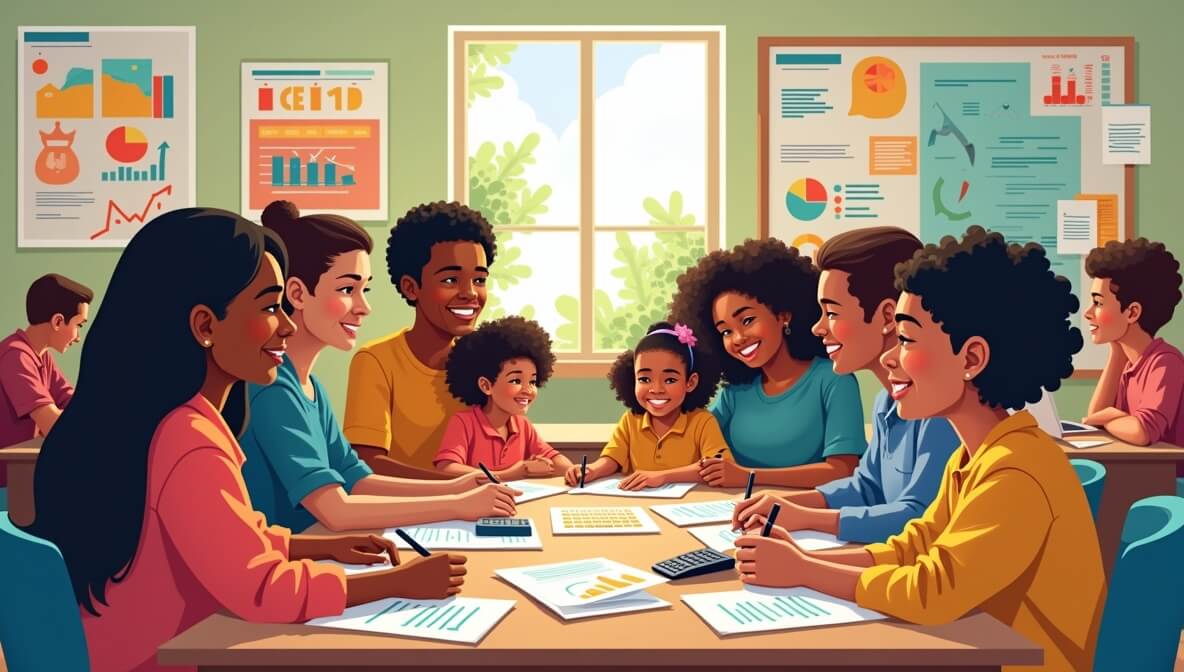September 04, 2025

Financial education is a powerful, yet often overlooked, tool in the fight against poverty. For low-income households, learning how to manage money isn't simply a matter of improving financial outcomes—it’s about building a foundation for long-term stability, opportunity, and empowerment. When families understand how to budget, save, avoid debt traps, and make informed decisions, they gain greater control over their lives and futures.
In today’s complex economy, where financial products are increasingly digital and nuanced, the need for financial literacy is more urgent than ever. Yet, millions lack access to the knowledge and resources needed to make sound financial choices.
Low-income families face a distinct set of financial challenges that make education particularly crucial. These challenges often include:
Without the skills to navigate these realities, families may fall into cycles of debt, miss opportunities to build wealth, or remain vulnerable to financial shocks such as job loss or medical emergencies.
According to the Organisation for Economic Co-operation and Development (OECD), financial literacy is closely tied to effective money management, which directly impacts poverty levels. Individuals with basic financial knowledge are more likely to plan ahead, save for emergencies, and avoid harmful financial behaviors.
Moreover, as discussed in Understanding Income Inequality: Causes and Consequences, structural inequalities often limit economic mobility. But when financial education is made accessible, it can help level the playing field by equipping people to make the most of their financial resources.
Effective financial education focuses not just on theory but on practical, everyday skills that families can use immediately. Key areas include:
Creating a household budget is one of the most powerful steps toward financial stability. For low-income families, even small changes—like tracking spending or setting aside modest savings—can prevent crises and create a sense of control.
Low-income households often rely on credit to cover emergencies, but without knowledge of how interest works or the long-term effects of debt, they may fall into costly traps.
Millions of low-income individuals are unbanked or underbanked. This leaves them reliant on expensive alternatives like check-cashing services or payday lenders.
Financial literacy is not a silver bullet, but it plays a vital role in complementing larger poverty-alleviation strategies. It enhances the impact of programs like microfinance, entrepreneurship training, and social safety nets.
Many microfinance programs around the world have found that pairing financial training with small loans increases the likelihood of success. When borrowers understand how to budget, reinvest, and manage risk, they're better equipped to run sustainable businesses. As discussed in Microfinance: Empowering Entrepreneurs in Poverty, financial knowledge often makes the difference between success and default.
In societies where access to wealth-building tools is limited by race, gender, or geography, financial literacy becomes a matter of justice. When marginalized communities gain financial knowledge and access, they are better able to advocate for themselves, avoid exploitation, and break free from generational poverty.
This aligns with broader strategies such as those described in The Role of Social Safety Nets in Poverty Alleviation, which highlight the need for both immediate support and long-term resilience.
While individual effort is crucial, financial education must also be institutionally supported. Public policies, educational institutions, and community organizations all have a role to play in promoting financial literacy—especially in underserved areas.
Grassroots programs have a strong track record of success. These include:
Programs such as youth savings clubs, teaching kids budgeting through games, or parent-focused financial coaching can create generational change. When financial knowledge becomes normalized in the household, it can set a foundation for children to grow up with healthier financial behaviors.
Online platforms and mobile apps have made financial education more accessible than ever. Many NGOs and fintech companies now offer:
While digital solutions are promising, they must also be equity-focused—ensuring that people without smartphones or broadband aren’t left behind. Blending digital and in-person efforts remains the most effective approach.
Governments can institutionalize financial education by:
Such policies not only educate individuals but signal that financial literacy is a public priority.
Financial education is about much more than math—it’s about dignity, opportunity, and agency. For low-income households, it can mean the difference between living in constant crisis or building a secure, hopeful future.
By teaching people how to make informed financial decisions—how to budget, save, manage credit, and plan ahead—we provide tools that empower individuals to escape poverty, withstand economic shocks, and thrive.
Investing in financial literacy is investing in people’s potential. It is one of the most cost-effective, scalable, and sustainable ways to break the cycle of poverty and create a more equitable society for all.
Would you like this adapted for a presentation, blog post, or educational handout?
Stay up to date with the latest tips, expert insights, product reviews, and step-by-step guides to help you grow, create, and succeed—no matter your industry or passion.